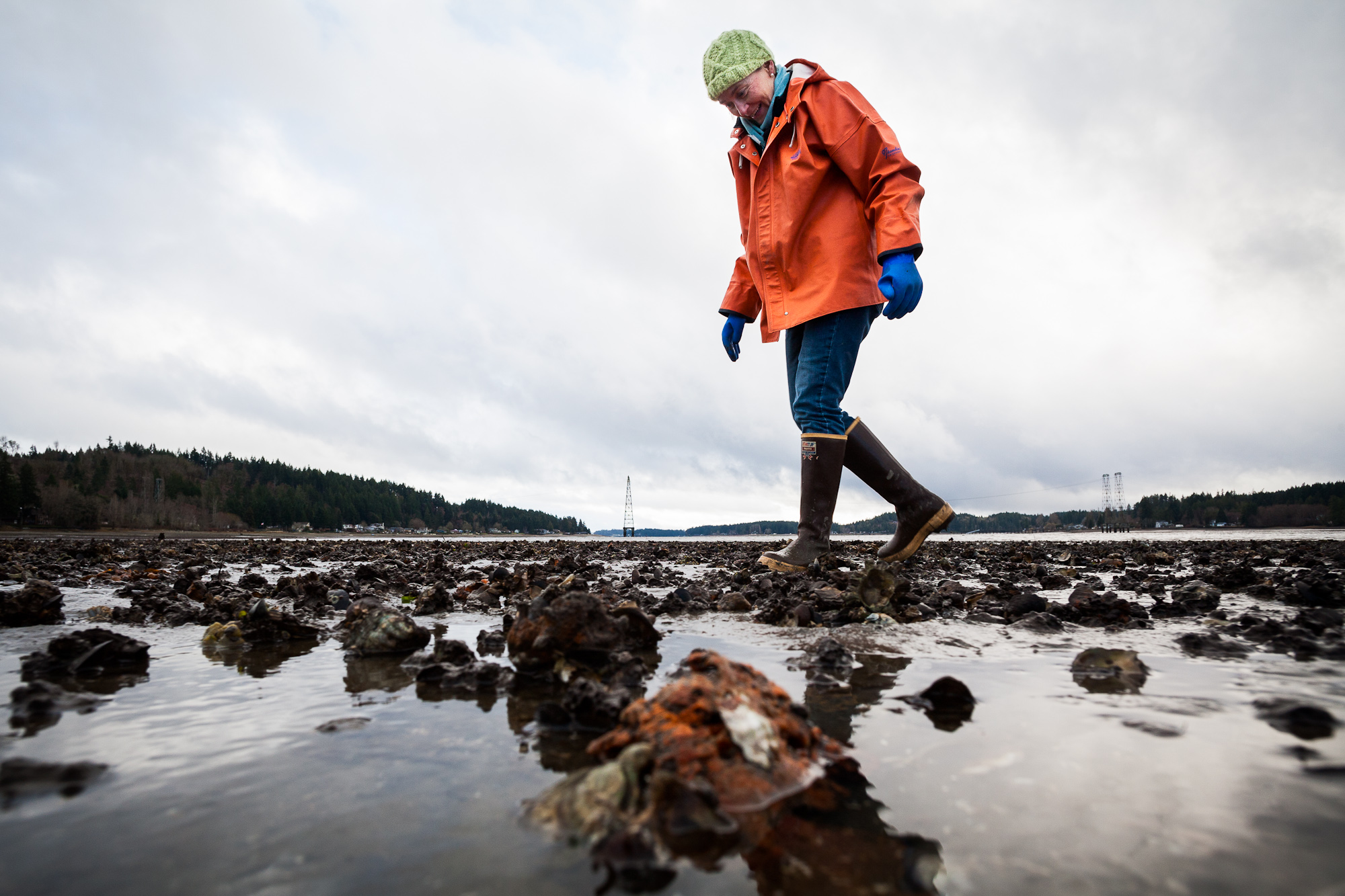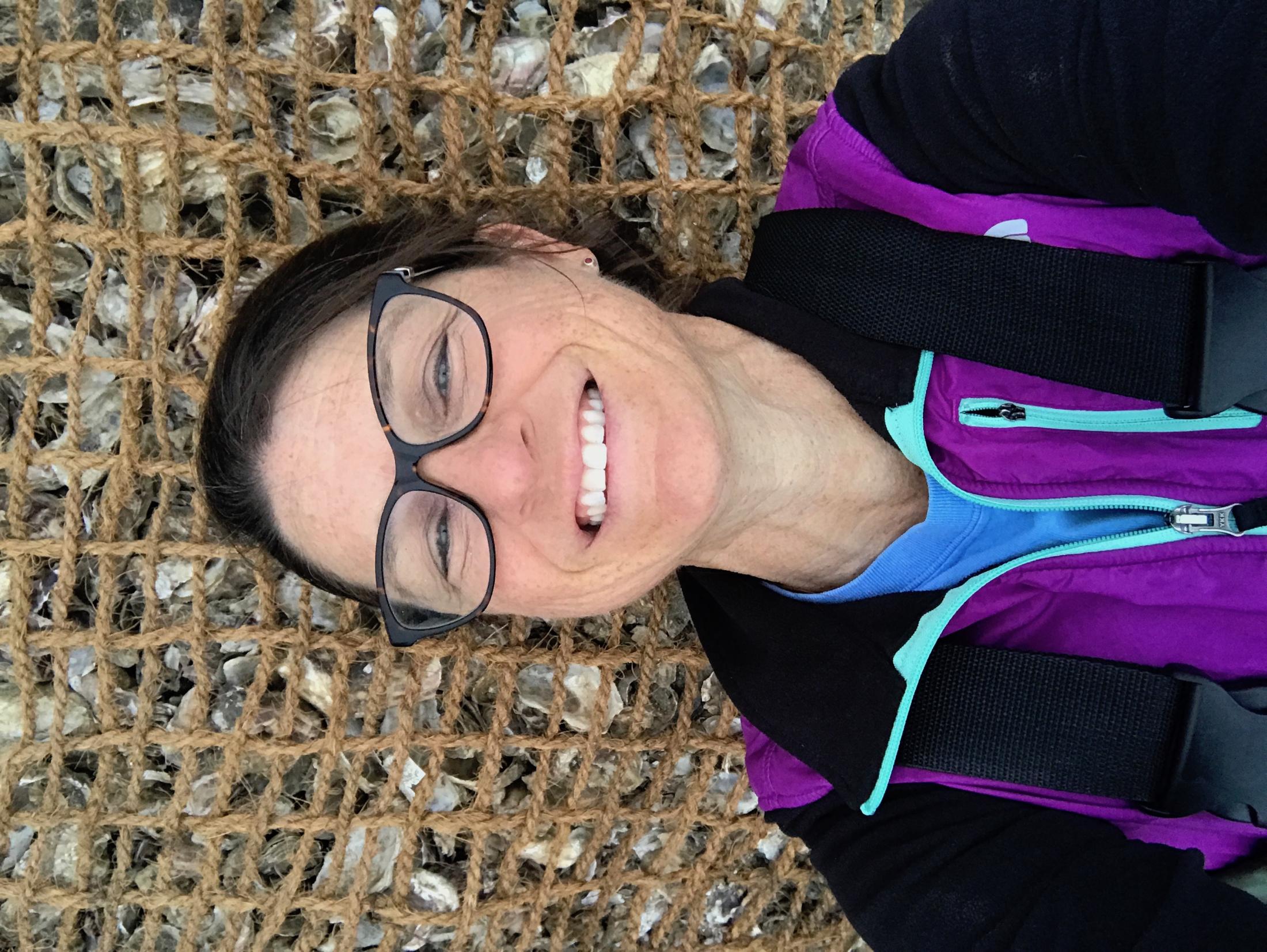Betsy Peabody from the Puget Sound Restoration Fund and Danielle Zacherl from California State University Fullerton talk about why they are involved in Olympia oyster restoration.

Betsy:
"I am an ardent devotee of Olympia oysters, the West Coast’s one and only native oyster. They are beautiful emblems of historic abundance. In days of old, where conditions were just right, Olympia oysters created dense structured habitats that supported diverse critters and helped cleanse local waters. Since people first traveled this coastline, Olys have featured, sometimes prominently, in the building of our culture and heritage. Tribal communities subsisted on rich abundant marine resources that included Olympia oysters. Mark Twain himself waxed poetic, and dined excessively, on THIS oyster in 1864.
Remarkably, and in spite of our unbridled love for this oyster, Olympia oysters have managed to persist throughout their historic range. They exist sparsely in most places, but their presence gives us a foothold for re-establishing dense aggregations that can once again provide a full suite of ecosystem services. Getting the chance to rebuild living shorelines today, that once again feature Olympia oysters, renews our age-old human connections to the marine resources around us.
Puget Sound Restoration Fund has been spearheading Olympia oyster restoration in Puget Sound since 1999 – with Washington Department of Fish & Wildlife, Tribes, growers, and many other collaborators. We’ve developed and customized our restoration toolkit to fit the 19 priority areas in Puget Sound designated for Olympia oyster restoration. This includes establishing a conservation hatchery with NOAA to produce seed for areas that have lost natural breeding populations. To date, we have collectively enhanced over 65 acres of Olympia oysters to help re-establish the habitat form and filtration function that dense aggregations of Olympia oyster provided historically. We count ourselves lucky to be restoring a small but mighty oyster that perfectly embodies the staying power of native species that define THIS place."

Danielle:
"As a marine ecologist and professor, I stumbled into oyster restoration quite by accident. I was studying Olympia oysters throughout southern California with the purely scientific motivation to understand how they propagate themselves across generations and among estuaries when I was approached by the city of Newport Beach and asked to develop a small oyster restoration project. As I was digging around for background information on the species’ historic presence in southern CA in order to justify the project, I quickly realized that there was a remarkable knowledge gap about this species’ presence, ecological role, and potential for restoration in southern California.
There are no quantitative data describing Olympia oyster densities, abundances, or the spatial extent of beds prior to their decline in southern California, though fossils and historic documents clearly indicate the presence of extensive oyster beds. We suspect that Olympia oysters historically functioned as a foundation species that formed habitat supporting a unique community of organisms. Imagine if a whole habitat, like a kelp forest, disappeared from a landscape, and how much loss might be associated with it! This notion motivated me to pursue Olympia oyster restoration to help unlock the mysteries surrounding this species’ ecological role in our estuaries.
When I started working on projects to restore this species about a decade ago, there was no scientific evidence about the ecosystem functions Olympia oyster beds might provide and little known about best practices for restoring this precious oyster. My lab group is now actively pursuing “science-based restoration”, designing our restoration projects as replicated scientific studies, so that our data can contribute to a growing knowledge base about how and where to restore Olympia oysters and what ecosystem functions their habitat might return. What started as a serendipitous request has turned into my life passion as I promote the need to actively monitor each restoration project to extract precious information useful for future practitioners!"

